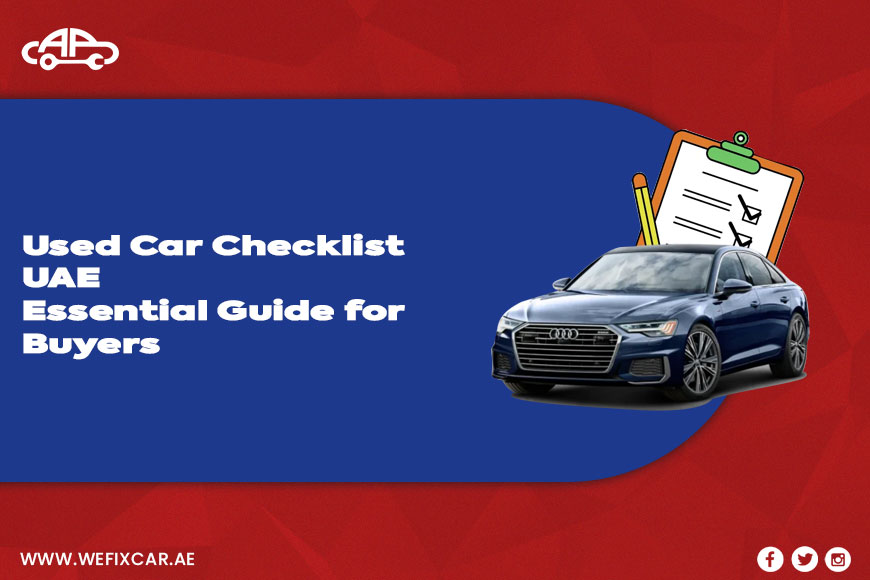Used Car Checklist UAE – Essential Guide for Buyers
Buying a used car in the UAE is a great option for many, but you have to go in with your eyes open. With so many choices out there, it is easy to fall for a low price or a pretty exterior. But without using a proper used car buying guide in the UAE, you are at risk of buying a lemon, which will end up costing you a fortune in the long run. By paying attention to what matters when you buy, you can walk away with a very reliable and budget-friendly purchase.
Read More: Car Insurance Add-Ons UAE – What Every Driver Should Know
Why a Used Car Checklist UAE is Important?
In the UAE, which has a hot climate, long drive distances, and a variety of road conditions, vehicles see a lot of wear and tear over time. While some used cars may be in good shape, others have issues that may not be apparent at first glance. A proper used car checklist UAE will help you to identify these issues early, which in turn will prevent expensive surprises after you buy the car. From the pre-purchase inspection to the review of the car’s history report, each step is important in protecting your investment.
Pre-Purchase Inspection – The Key to a Smart Purchase
In the process of buying a used car pre-purchase inspection is a very important step. This includes taking the car to a trusted mechanic, who, in turn, will look for any issues that may not be visible at first. As for what to check, pay close attention to the engine, brakes, suspension, and transmission, which are known to have large repair bills. Also included in the inspection should be the tires’ condition, as worn-out or different tire sizes can present a safety issue and may need to be replaced right away. Also, note signs of oil leaks, strange sounds, or proof of past accidents, which will either get you a better deal or out of a bad one.
Service History and VIN Check – Confirming the Car’s Background
A full service history is your indicator of how well the car has been maintained. Things like regular oil changes, brake services, and scheduled maintenance are what you should see from a responsible owner. If the records are incomplete or missing, that is a warning sign. Also very important is to do a VIN check, which confirms the car’s identity and also tells you if it has been in accidents, had major repairs, or is a stolen car. In the UAE, we have official platforms that you can use to do a VIN check and get reliable info on the car’s past.
Additional Used Car Tips for UAE Buyers
Beyond in-person and online research, here are other great tips for used car checklist UAE. Always go for a test drive to see how it performs, handles, and what the comfort level is like. Check the air conditioning, which in the UAE, you want to make sure is in full working order. Look for inconsistency in the paint, which may point to past body work. Also, get a look at all the lights, signals, and electronic features to see that they are in good working order. If the car has any modifications, make sure they are legal and won’t bring up issues at registration or with the insurer.
Conclusion
Following a careful used car evaluation process is what will put you at ease as you buy in the UAE. From the professional pre-purchase inspection we do to going over the service history and performing a VIN check, each step is a protection from that which may break your budget. At We Fix Car, we put buyers at ease by providing expert inspections and guidance that is tailored to the UAE market. With the right due diligence done, you can leave the dealership with your used car, which is not only reliable but also a smart investment.
FAQs
1. In what way does a used car checklist UAE play out?
It also brings to light mechanical and structural problems, which may cause large repair bills post-purchase.
2. How do I look up a used car’s VIN in the UAE?
Through government or accredited online systems, you may check a VIN for a vehicle’s past accident and ownership info.
3. When looking at a used car, what tire condition should I note?
Tires must have even wear, no visible damage, and should not exceed the recommended age for safety.



